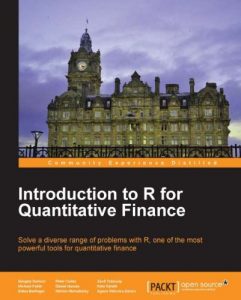In Detail
Quantitative finance is an increasingly important area for businesses, and skilled professionals are highly sought after. The statistical computing language R is becoming established in universities and in industry as the lingua franca of data analysis and statistical computing.
Introduction to R for Quantitative Finance will show you how to solve real-world quantitative finance problems using the statistical computing language R. The book covers diverse topics ranging from time series analysis to financial networks. Each chapter briefly presents the theory behind specific concepts and deals with solving a diverse range of problems using R with the help of practical examples.
This book will be your guide on how to use and master R in order to solve real-world quantitative finance problems. This book covers the essentials of quantitative finance, taking you through a number of clear and practical examples in R that will not only help you to understand the theory, but how to effectively deal with your own real-life problems.
Starting with time series analysis, you will also learn how to optimize portfolios and how asset pricing models work. The book then covers fixed income securities and derivatives like credit risk management. The last chapters of this book will also provide you with an overview of exciting topics like extreme values and network analysis in quantitative finance.
Approach
This book is a tutorial guide for new users that aims to help you understand the basics of and become accomplished with the use of R for quantitative finance.
Who this book is for
If you are looking to use R to solve problems in quantitative finance, then this book is for you. A basic knowledge of financial theory is assumed, but familiarity with R is not required. With a focus on using R to solve a wide range of issues, this book provides useful content for both the R beginner and more experience users.



